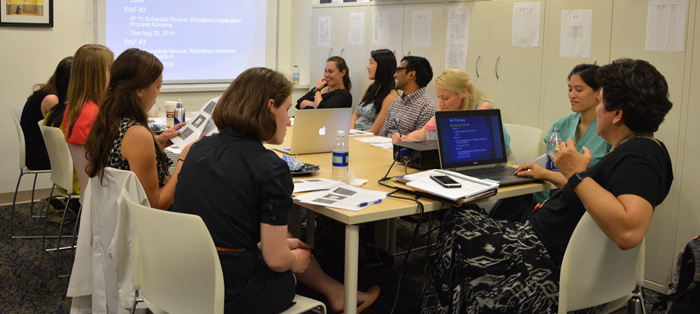About the Women's Health Education Program

In 1993, the Medical College of Pennsylvania became the first medical school in the country to completely integrate women's health issues into its curriculum. In contrast to schools which present women's health as an occasional lecture or elective, we are committed to integrating women's health issues into every aspect of the curriculum. We emphasize the responsibility of all physicians in delivering women's health care.
The Women's Health Education Program was founded by Sandra Levison, MD, and Lucia Beck Weiss, MS, with initial funding from the U.S. Department of Education Fund for the Improvement of Post-Secondary Education, to serve as a model for other institutions wishing to develop women's health curricula and as a clearinghouse for women's health information.
In March of 1996, the program, as part of the Institute for Women's Health and Leadership, was designated a National Center of Excellence in Women's Health by the Department of Health and Human Services. The program has developed resource materials such as the appended bibliography and a women's health library. Presentations on implementing women's health curricula have been made at numerous national meetings.
Since its founding, the Women’s Health Education Program has expanded to address the health of not only women, but transgender and gender non-conforming patients as well. The program recognizes that health inequities exist for people across the spectrum of sex and gender and strives to provide education around these interconnected issues.
Program Highlights
Women's health is an extensive subject, including topics related to public health, community outreach, health education, patient care and many others. Women's Health Education Program has ongoing activities throughout the year that highlight these issues. We strive to bring focus to health concerns that people of all genders face and attempt to educate medical professionals, as well as the community at large.
Mission
Innovate, Educate, Advocate and Integrate: preparing tomorrow's physicians for excellence in health care delivery to all women across the lifespan.
Philosophy
The lives of women will improve as health professional training becomes imbued with holistic, comprehensive strategies for the care of women. A curriculum that truly incorporates sex and gender medicine and expands women's health beyond reproductive medicine to the entire lifespan requires a robust multidisciplinary approach that blends biomedical, psychosocial and public health aspects of health and disease.
The academic framework for achieving this curriculum nurtures excellence in:
- Educational innovation
- Clinical care
- Research endeavors
- Advocacy for patients
- Mentorship and advocacy for students and future physicians
Goals
- Promote ongoing integration of new scientific development in girls' and women's health into the medical curriculum.
- Spearhead innovations in educational research to advance women's health.
- Foster the development of the next generation of physician leaders in women's health education, care and research.
- Provide leadership development for students through student advising, mentoring, shadowing, research and community health opportunities.
- Enable role modeling of physician effectiveness in girls' and women's health education outreach through student participation in community events.
- Energize faculty in all disciplines throughout the entire institution to include women's health in their curricula and enable new educational collaborations and synergies.
- Enhance the visibility and reputation of the professional education program throughout the academic health center, the university, and the local, regional and national community.
- Promote replication of the medical college educational model of integration of women's health.
Back to Top